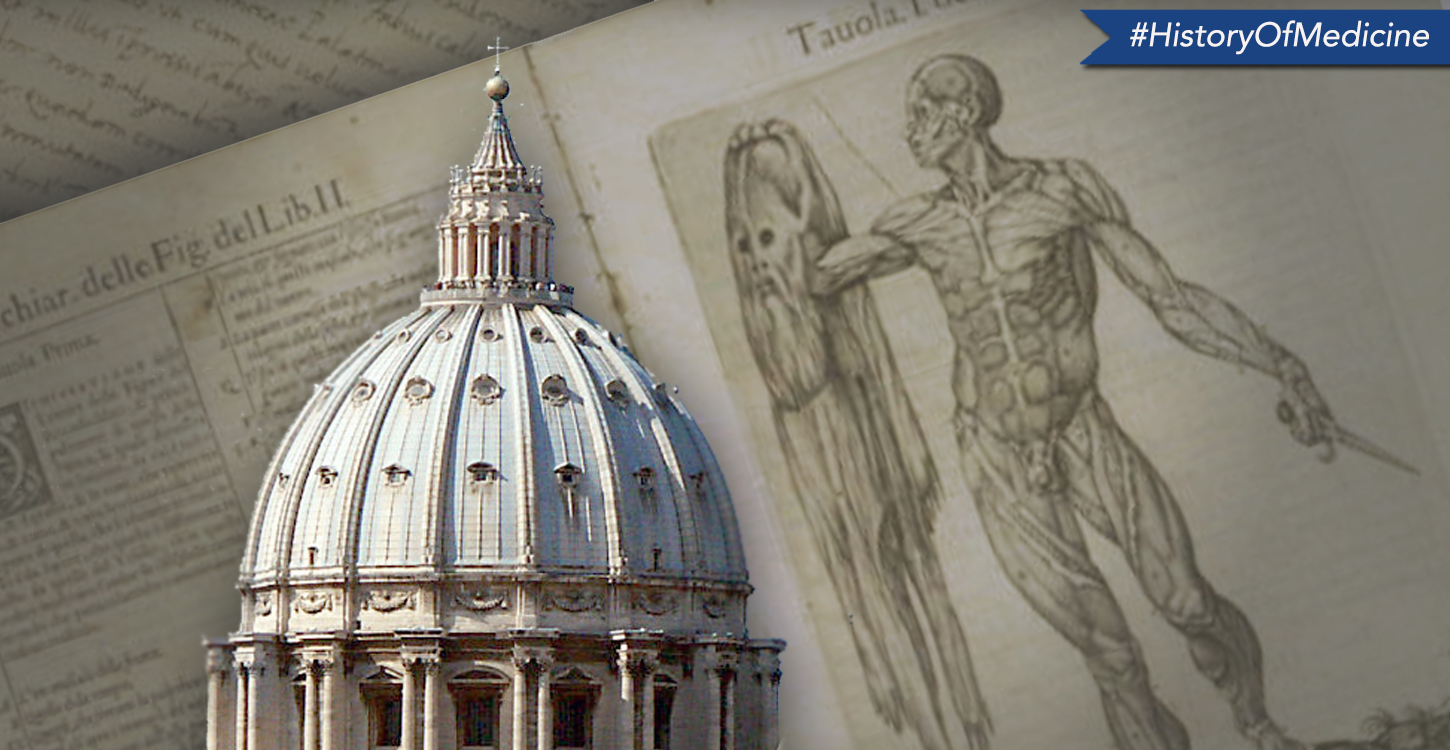Long before he decided to attend seminary – certainly far before imagining he would one day become Pope -- young Jorge Mario Bergoglio told his mother he was planning to become a doctor. The piles of theology books in his room told a different story. "I didn't lie to you, Mom," he said. "I'm going to be a doctor of the soul."

Nearly 60 years after pursuing his calling, Pope Francis is drawing an unprecedented welcome as he visits the U.S. this week. In honor of the occasion, we share a lesser known but fascinating bit of Vatican history – the role of the Catholic Church in Renessiance medicine.
Like Pope Francis, the very first Christians took ministering to the sick, hungry, and poor very seriously. As the Benedictines put it, "The care of the sick is to be placed above and before every other duty." The Christian emphasis on charity led to the first organized efforts to provide food and nursing services to the ill, as well as the first hospitals. In the spirit of healing both body and soul, many of the first priests who emerged in the mid-first century, such as St. Luke the Evangelist, were also physicians.
Although medical knowledge didn’t improve much for about 1,000 years, an early welfare system in the Middle Ages included hospitals, orphanages, centers for lepers, and hostels where pilgrims could find meals and beds. Monasteries and convents were not just centers for religious study; they became the primary centers for the study and practice of medicine, serving as key providers of medical care until about 1300. In the face of mysterious and devastating illnesses like the plague, these shrines drew steady business from pilgrims hoping for miraculous cures.
As the Renaissance dawned in the 14th century, the study of medicine blossomed anew. Under the encouragement of Pope Nicholas V, the Vatican sponsored the acquisition and translation of ancient medical and scientific texts from Greek into Latin, including the seminal works of Galen, the 2nd century Greco-Roman physician and scholar whose prolific writings formed the foundation of Western medicine. Galen’s medical advice, based on an understanding that health was determined by a balance of four ‘humours’ in the body, would not stand up to today’s scientific standards -- but during his time, this was the best medical thinking and played a central role in medical understanding for the next 15 centuries.
 Even today, the Vatican library is still at the forefront of discovering and translating Galen’s work; as recently as June of 2015, scholars found a hidden Syriac (form of Aramaic) translation of Galen’s 11-book treatise, ‘On the Mixtures and Powers of Simple Drugs,’ which is just now being deciphered and analyzed at the library.
Even today, the Vatican library is still at the forefront of discovering and translating Galen’s work; as recently as June of 2015, scholars found a hidden Syriac (form of Aramaic) translation of Galen’s 11-book treatise, ‘On the Mixtures and Powers of Simple Drugs,’ which is just now being deciphered and analyzed at the library.
Religious orders set up hundreds of hospitals across the Mediterranean and Europe during the 15th and 16th Centuries, and all the while, the Vatican library continued to grow. The Popes patronized anatomists such as Juan Valverde de Amuso, who learned anatomy by dissecting cadavers, and artists such as Michelangelo, whose study of anatomy would further enhance artistic depictions of the crucifixion. Dissection was considered acceptable as long as the cadavers came from criminals and that they were given proper religious burials.
In the following centuries, Catholic clergy-scientists would continue to advance medical and scientific understanding. Among the most famous is Gregor Mendel, now considered the father of genetics, who was an Augustinian friar.
Today the Catholic Church maintains roughly 18,000 clinics, 16,000 homes for the elderly and those with special needs, and 5,500 hospitals around the world, making it the largest non-governmental provider of healthcare.
---
Check out other interesting stories in our "History of Medicine" series:
- The Ingenious Surgery that Saved the World's Smartest Man
- First Pediatric Heart Transplant
- Assassins, Embroidery, and the Origins of Vascular Surgery
- First Measuresment of Blood Pressure
- Woman of Honor
- Ancient Indian Nose Jobs & the Origins of Plastic Surgery
- The Galling Gallbladder
- The Mysterious Appendix
- Our 5 for the New $10
- The Small & Might Parathyroids

